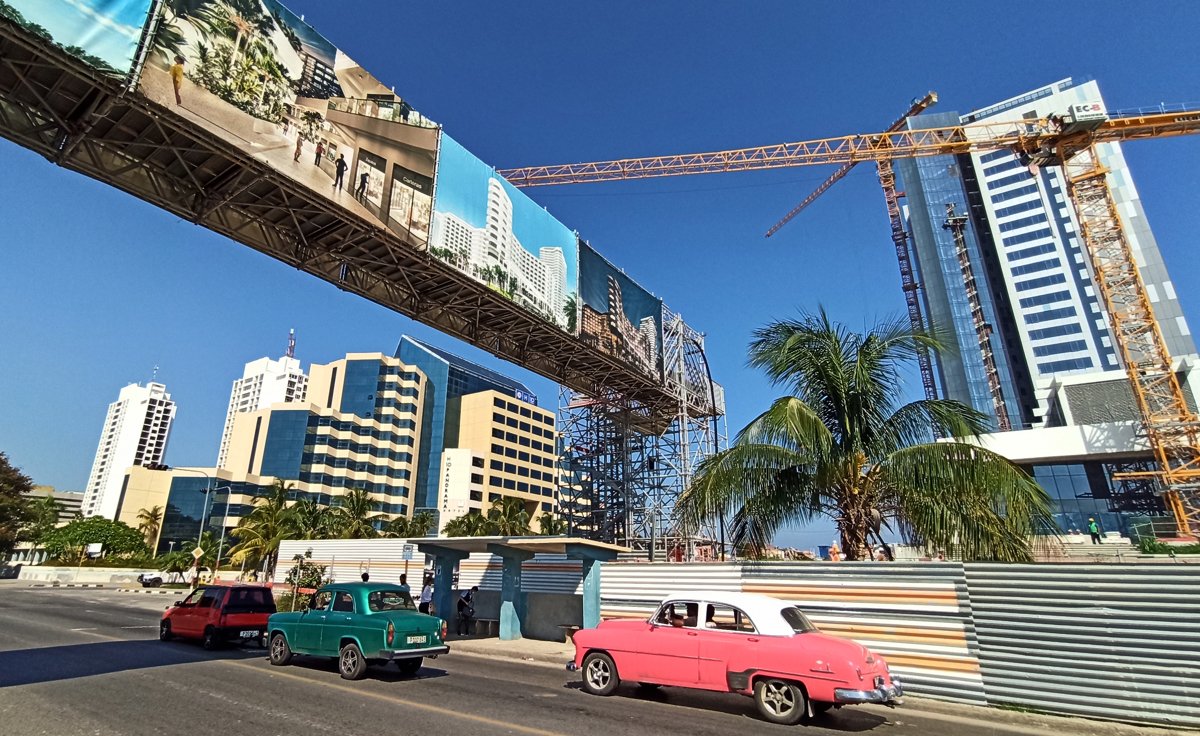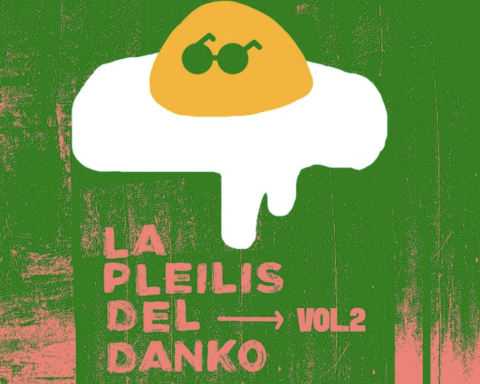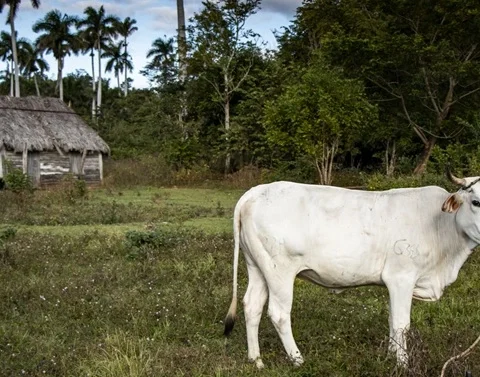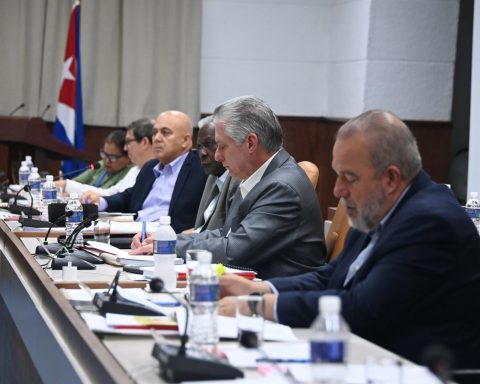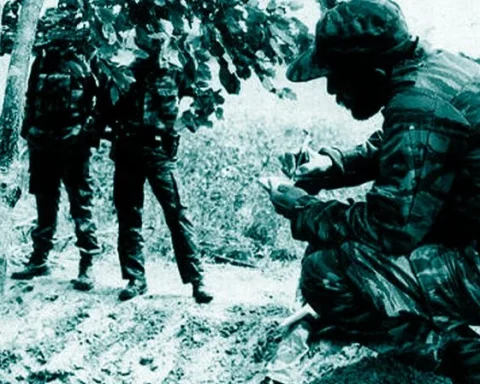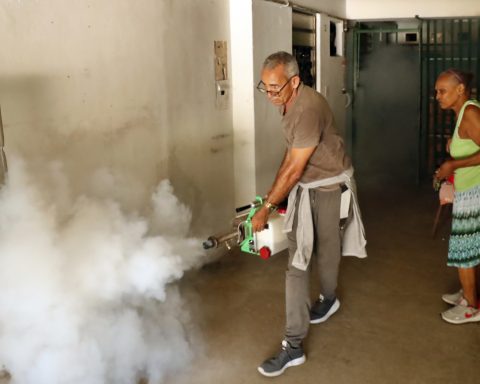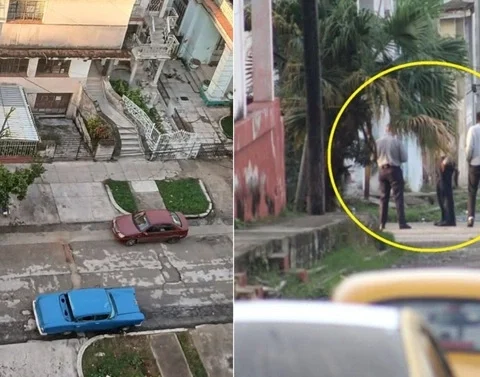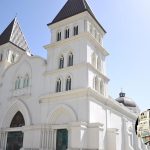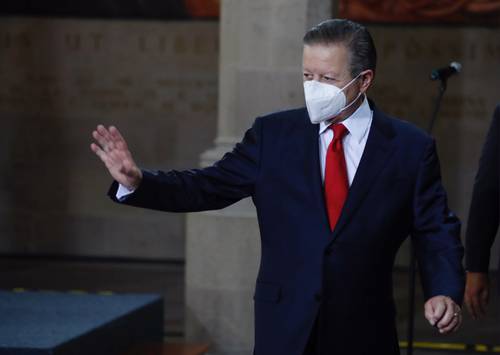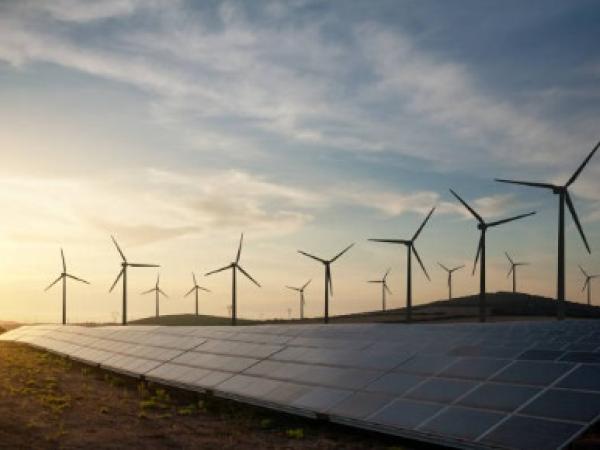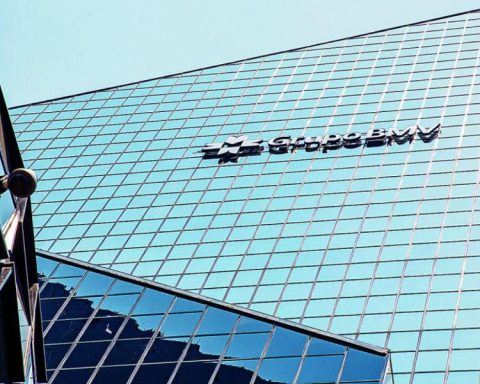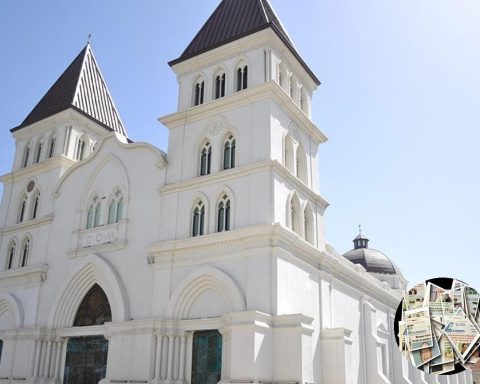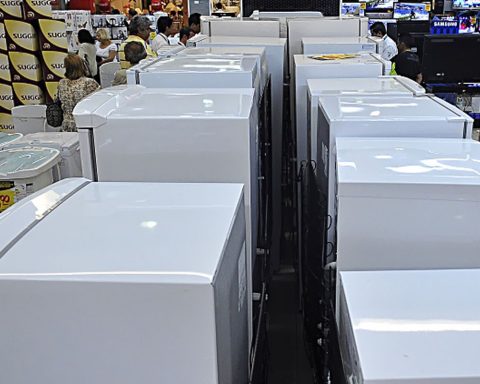In the cafeteria of the luxurious Grand Aston hotel in Havana —opened in march— there are more waitresses than guests, to the point that in the middle of a summer afternoon the employees joke: “There’s even time to think.”
From this imposing building, with 600 rooms, which can cost around 200 dollars a night, you can see the iconic boardwalk of the cuban capital between a row of empty tables and a refrigerator with foreign beers.
There are hardly any visitors staying. But not only here, but in a good number of hotels on the Island, some of them built and opened in recent years, coinciding with the serious crisis that the country has been facing since 2020.
“I realized (the lack of tourists) when I looked from my room to the street the next morning and there was no one. It is true that it seemed strange to us, ”confesses Valerie, a 20-year-old Frenchwoman together with her friend Shawnee, 19, from the lobby of the Habana Libre hotel.
Although hotel occupancy in Varadero —the main sun and beach destination in Cuba— is higher than in Havana and the island is not in high season —coinciding with winter in the northern hemisphere— the figures used by experts reaffirm the perception of these two girls.
Tourists and rooms
The occupancy rate in accommodation in Cuba remained around 50% between 2016 and 2020, according to official data collated by the economist Pedro Monreal.
The number of rooms, for its part, has risen by more than 25% since 2016. If at the beginning of that year there were 62,000 rooms, the Ministry of Tourism (Mintur) currently speaks of 78,862, of which 74% are from 4 and 5 stars.
Monreal adds that in the last biennium, while the gross domestic product (GDP) fell by more than 7%, the State spent nearly 1,500 million dollars on hotels.
The construction of new tourist rooms —which this economist estimates to be the bulk of the “business services, real estate and rental activities” item— came close to 50% of the investment between 2020 and 2021.
In the first three months of 2022, the construction of hotels, as well as other aspects related to tourism, accounted for 35% of total investments, according to data from the National Office of Statistics and Information (ONEI).
This means that 20 times more was invested in this area than in public health (1.7%) or education (1.2%), according to official figures.
The increase in the number of rooms contrasts with the ups and downs that the number of tourists has suffered due to political vicissitudes and the pandemic, mainly.
In the first semester, Cuba received 682,297 international travelers, five times more than in the same period of the previous year, but still far from the more than 2 million that arrived in the first six months of 2019, before the outbreak of the coronavirus.
The country’s authorities expect the arrival of 2.5 million tourists by 2022, a figure that the experts consulted have questioned whether it can be achieved with the current trend.
Before the pandemic, in 2018 and 2019, Cuba attracted between 4 and 5 million international travelers a year.
Incomprehension
These figures have generated misunderstanding among certain Cuban sectors, as the government itself has recognized, something in part related to the current adverse economic context.
Cuba has been going through a serious crisis since 2020 as a result of the pandemic, the tightening of US sanctions and errors in national management.
Cuban President Miguel Díaz-Canel recognized this year in the framework of a tourism fair that the country’s investment effort in this sector “is not always understood by part of the population” and emphasized the need to work on the ” efficiency” of the sector.
Cuba: hotel built on the ruins of one of the most famous cabarets in Havana
The experts, for their part, do not share the Government’s diagnosis.
The construction of new hotels “is not justified,” he assures EFE Cuban economist Mauricio de Miranda. “At no time in recent times has there been an occupancy that really indicates that you need to increase the number of rooms,” he says.
Pavel Alejandro Vidal, associate professor at the Javeriana University of Cali (Colombia), agrees with this opinion, although he adds that tourism “has maintained acceptable levels of efficiency” and highlights that “it is the only sector in which a national recovery.
state bet
This commitment to increasing the hotel offer has its roots in a 2016 plan from the Ministry of Tourism (Mintur) that contemplates the construction of more than 100,000 rooms by 2030.
The document was woven at a time when the Cuban gaze was focused on the potential of the US market, the largest and wealthiest in the Caribbean region, as a result of the “thaw” process with the United States during the mandate of Barack Obama ( 2009-2017).
Two years later, and with Obama’s roadmap squandered by his successor, Republican Donald Trump, the Mintur drew up the 2018-2030 Development Plan with a view to opening 216 new hotels.
“We cannot wait for the blockade to end to build the hotel plant,” Diaz-Canel justified then, who hoped that the sector would become “the locomotive of the national economy.”
EFE He contacted the Mintur to be able to include his position and arguments, but for the moment he has not received a response.
tourist model
Experts criticize not only the money that the Cuban government allocates to hotels, but also the model with which the country tries to position itself as a destination abroad.
“They lose the opportunity to create their own tourism product. They have opted for the mass sun and beach model, which is already in decline in many countries”, criticizes the economist Elías Amor.
Amor also reproves that the budget is hoarded in accommodation and not in “roads or other types of infrastructure” that also make up the traveler’s experience: “In the end, the tourist leaves the resort and what he finds is a country with many shortcomings ”, he points out.
For Vidal, the way in which hotel investment is decided in Cuba is also linked to the weight of the Business Administration Group (Gaesa), a multisectoral conglomerate in the hands of the Revolutionary Armed Forces (FAR) with more than fifty companies, among them the main ones in the tourism sector.
“It is a factor… it has managed a cash flow independent of the rest of the economy. They have facilities that other ministries and industries do not have,” says Vidal.
Gaesa, which is not accountable to the Mintur or to parliament and does not disclose its accounts either, controls a large part of the hotels and the income from the sector.
His economic influence in Cuba is enormous: some experts consider that he controls more than 50% of the GDP.
Juan Carlos Espinosa / EFE
